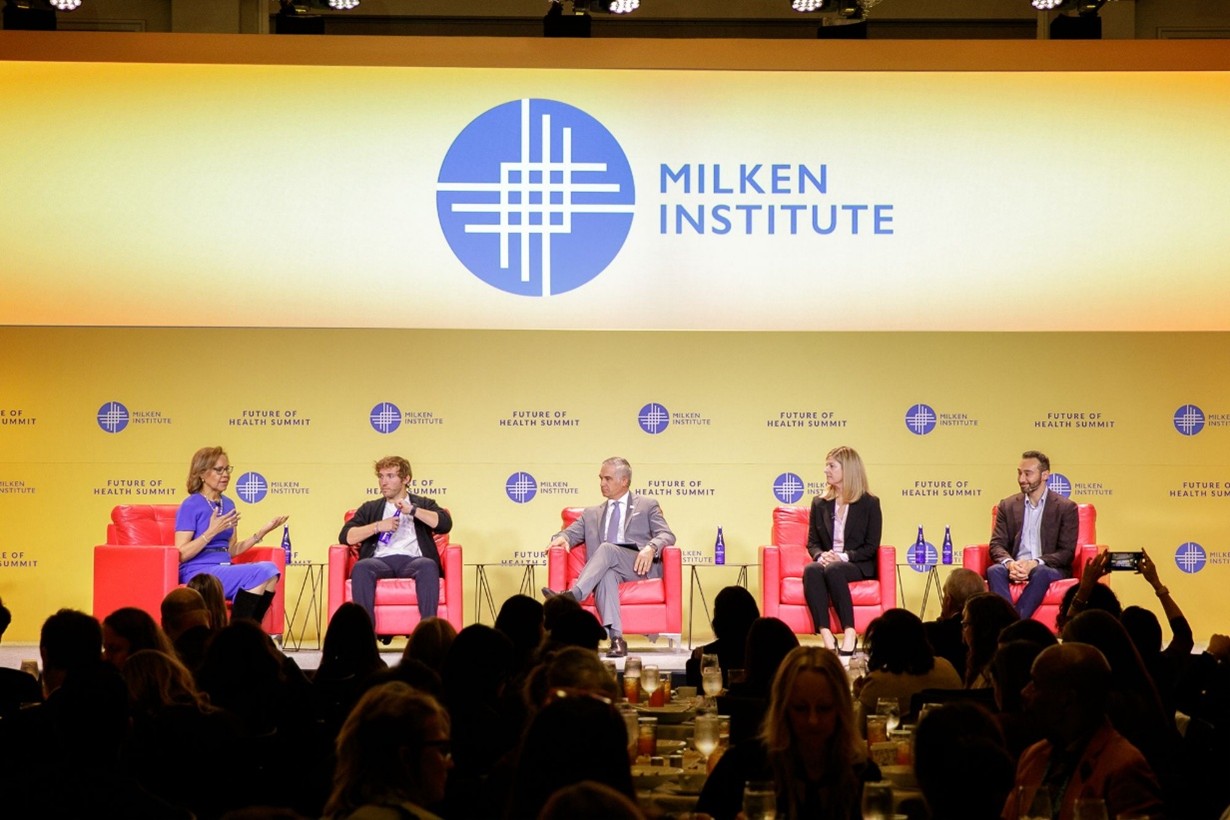Increasing Access to Healthcare: Insights from the Future of Health Summit 2025
11/17/2025

Photo credit: The Milken Institute
Centene CEO Sarah London recently joined a panel of healthcare industry experts at the Milken Institute’s Future of Health Summit 2025 to talk about what’s on the horizon for healthcare. A clear theme rose to the surface: there’s an unprecedented opportunity for innovation in care delivery and coverage. However, each leader expressed accessibility as the main obstacle the industry must overcome.
The discussion focused on five crucial questions:
1. Why is access to care still limited while innovation is peaking?
Despite a surge of breakthroughs, including AI advancements in back-office operations that give time back to providers so they can focus on what they do best – patient care, not paperwork – access to care is still a challenge for some. The panelists pointed to a range of obstacles, including affordability, workforce shortages, and patient proximity to care. New therapies can be costly, specialists sometimes have months-long waiting lists, and care deserts persist in some rural areas. To truly improve access, the panel noted we need to reimagine key elements of our system – from payment models to care delivery – so that high-quality care is affordable, timely, and available to everyone who needs it. That means expanding access to essentials like healthy food, prioritizing early detection so care can begin sooner, and fostering partnerships that encourage responsible information sharing.
2. Can innovation improve healthcare access?
When used properly, digital tools and new approaches to care can help break down barriers to access. The panelists discussed telemedicine as a way to extend the reach of providers, especially specialists, into underserved communities. Sarah London emphasized that improved access to information through technology can empower patients to make more informed decisions about their health and the type of care they seek. She also noted that innovation in coverage models, specifically for individual coverage, is essential – and that Centene views this as the future of insurance.
3. What is the best use case for AI in healthcare today?
The panelists agreed that AI’s greatest value isn’t in replacing people, but in amplifying their impact. By automating some administrative tasks, AI allows providers to “work at the top of their license” and devote more time connecting with patients – the very reason many of them chose a career in healthcare. One panelist framed it as using technology to “bring humanism back to medicine.” Ideally, AI becomes a quiet partner, streamlining care so providers can focus on the human element over paperwork. Beyond administrative support, promising uses for AI in healthcare include predictive modeling to inform prevention efforts and care models, with appropriate oversight.
4. What are other important factors in increasing access to healthcare?
The panel, which included representatives from tech, a hospital system, the American Cancer Society, and Centene CEO Sarah London, agreed that partnership is a key ingredient in solving the accessibility challenge. They emphasized multi-sector partnerships.
- Payers and providers can work together to streamline claims and payment systems;
- Community organizations already invested in screening and prevention efforts can be more integrated into the system
- Policymakers can help facilitate efforts to address drivers of health.
Together, these efforts can increase access to care and strengthen prevention by ensuring resources are available for those who truly need them.
5. How must we rethink where and by whom care is delivered?
The panelists challenged the idea that healthcare must revolve only around hospitals and traditional physicians. Reimagining who provides care and where can significantly improve access. Sarah London noted that, with the right support and in the appropriate scenarios, resources like doulas, community health workers, and others can support members through their care journey – often, in a more proactive and preventive manner. Similarly, care can also happen through community organizations or connected devices. By expanding who delivers care and where, systems can truly meet people where they are.
Emerging innovation and multi-sector partnerships present a unique opportunity to enhance our healthcare system. Together, we have the power to transform the health of the communities we serve, one person at a time, for equitable, lasting change.